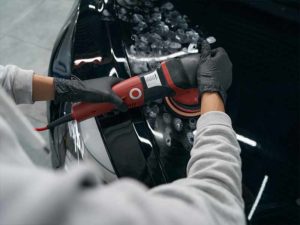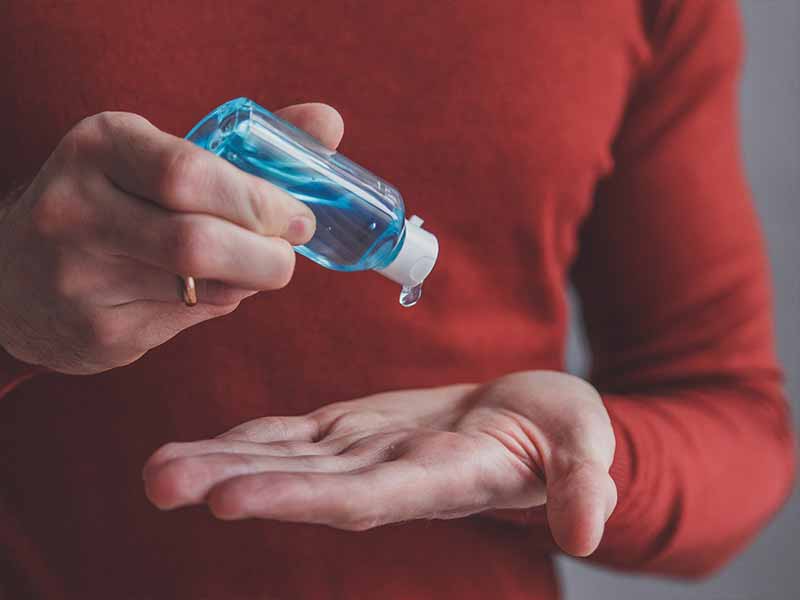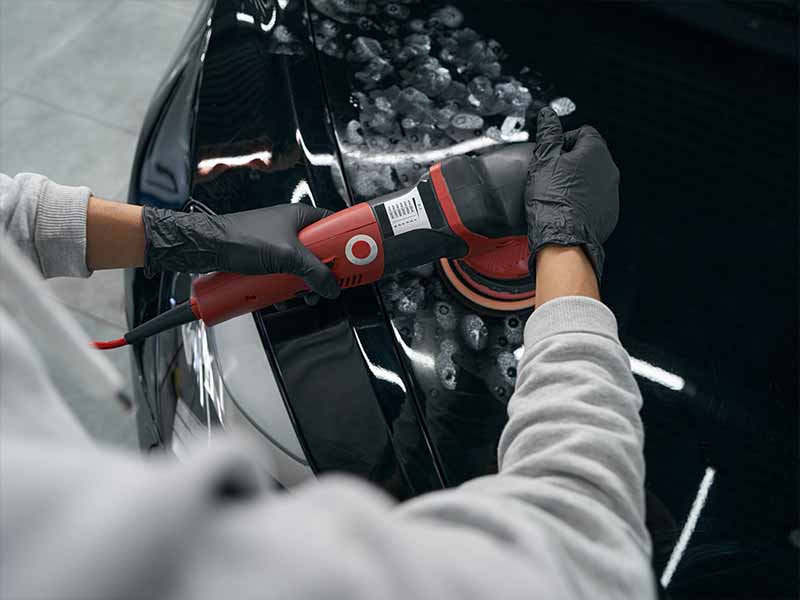Table of Contents
There’s nothing like a good polish to make your car look showroom-ready. It also works wonders in removing surface-level scratches and defects. However, polishing your car only works if you use the right amount of pressure.
How Much Pressure To Apply When Polishing A Car
With a consistent 4 to 5 pounds of pressure, you will get the best results when using a dual action polisher.
With an orbital polisher, you’ll want to use a little less and move around quicker to avoid melting your car’s topcoat.
By hand, you’ll need 10 pounds and more to achieve the same level of shininess.
If you want to know how much pressure to apply when polishing a car by hand or with a machine, you came to the right place. Our detailing experts will answer all your questions in this guide.

Why Pressure Matters
Pressure is one of the biggest components when it comes to polishing your car. If you want to see the difference, try this experiment: Mask off three separate 1’ x 1’ areas of your car. On one, apply very little pressure as you polish it. Use the same pad and product on the next area where you apply a moderate pressure. Finally, use more aggression in the final area.
Take a closer look at these three areas and you’ll notice a remarkable difference. The second area will look the most polished, remove the most defects, and cause the least amount of damage to your topcoat.
When you apply pressure, whether using a machine or hand-polishing, you’re applying more force to the top of your car. This causes you to cut deeper into the topcoat.
If you’re trying to get out some scratches you see on your topcoat, you’ll want to get deep enough to work out these scratches. This is one reason why pressure is so important.
For giving your car a shiny look, you need to make sure you’re applying enough pressure. Too little won’t smooth out the surface of your topcoat and too much might do damage.
In addition, pressure will help distribute the polishing product that you’re using. If you don’t push down hard enough, then it won’t evenly disperse across your car as you move.
Consistency Is Often More Important Than Amount of Pressure
Even though pressure is so important, consistency is more important. In other words, if you start out polishing with 3 pounds of pressure, you’ll want to keep that pressure up for the rest of the job. That will give you the best-looking results.
The Variables Associated with Required Pressure
Before officially answering the question, let’s talk about some of the variables at play. These will change how much or how little pressure you have to apply.
Machine Versus Hand-Polishing
There are polishing machines that you can use in this case — either a dual action polisher or an orbital polisher.
If you plan on polishing your car any more than a few times, we highly suggest considering these tools. They’ll save you countless hours and give you a better result in the end.
If you don’t currently have one of these machines, then you’ll be hand-polishing your car. Since you don’t get the same mechanical advantage as you would with a machine, you’ll need to apply more pressure if it’s just you and the towel.
The Type of Machine You’re Using
A dual action polisher will require more pressure than an orbital one. There’s a common issue with orbital polishers where the topcoat gets melted from too much heat. Too much pressure and time spent in a single area will generate too much heat and lead to melting.
To avoid this, you’ll want to apply less pressure with an orbital polisher.
What’s the Purpose of Your Polish?
Polishing your car can come from a few different desired outcomes:
- Protecting your car’s paint
- Wanting a shiny, new-looking car
- Getting out minor surface defects
- Eliminating tougher swirls and scratches on your paint
This list also corresponds with how much pressure you’ll need to apply, with the lightest pressure at the top and most pressure at the bottom.
When you’re trying to get rid of tough scratches, you’ll need to work deeper in your topcoat and remove these imperfections. To do so requires a lot more pressure than simply adding a thin layer of protection to your vehicle.
The Type of Pad Used
More aggressive pads should be handled with less pressure to avoid doing damage to your car. With softer polishing pads, you might have to press down harder to get the same results.
The Type of Polishing Product Used
Finally, you’ll need to tweak your applied pressure based on the polishing product that you’re applying. It’s the same idea as the type of pad you’re using — more aggressive products will cut deeper into the topcoat of your car. As such, you should use less pressure as you start out before finding your rhythm.

How Much Pressure to Apply When Polishing a Car
If you’re using a dual action polisher, you only need about 4 or 5 pounds of downward pressure. With an orbital polisher, you’ll want to apply a little less to avoid melting your topcoat of paint.
For polishing by hand, you’ll need more pressure. Typically, you’ll apply around 10 pounds of pressure, but that figure can get much higher if you’re trying to work out a surface imperfection.
How to Know That You’re Applying Enough Pressure
When you use a machine to help with your polishing, you can use the pad as a guide. You’ll want to see the pad get compressed a little as you work your way around the car. If it looks flat, then you’re applying too much pressure.
In addition, you can tell from the vibrations of the machine. If it feels especially rough, either your pad isn’t parallel with the surface under it, or you’re pushing down too hard.
Let the machine do the work for you. All you need to do is apply an even pressure consistently across the car, and you’ll love the results.
Helpful Links
Conclusion
Now you know how much pressure to apply when polishing a car by hand or with a tool. Some people think that applying more pressure is good because it gets deeper into the surface defects. This is a dangerous mentality to have, and it can lead to melting your topcoat.
Let your machine do the work and look for the polishing pad to slightly compress without flattening. Keep the pressure consistent and your car will look brand-new afterward.









